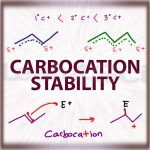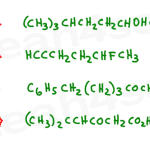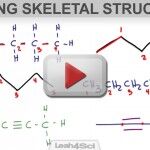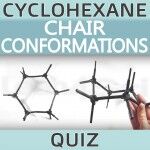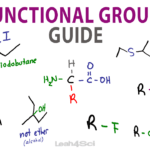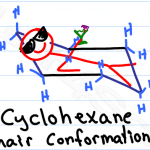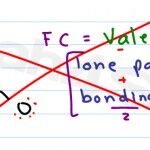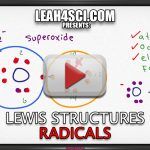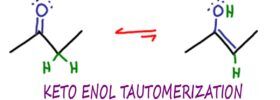This video walks you through the Chair Conformations Practice Quiz bonus question B – Converting a cyclohexane chair conformation to double Newman Projections. Practice is ESSENTIAL to mastering Organic Chemistry. You have to be able to apply the skills you are learning. First, complete the Cyclohexane Chair Conformations Practice Quiz, and then watch this video where I go over the Challenge Question […]
Carbocation Stability and Ranking
Carbocations arise so frequently in Organic Chemistry that recognizing them must become second nature. After reading this tutorial, you should be able to eyeball a molecule and determine where a carbocation is likely to form as well as its potential stability. This will help you master carbocation intermediate reactions down the line including Markovnikov alkene addition […]
Naming Organic Compounds Practice Problems with PDF Solutions
Naming organic compounds (aka IUPAC Nomenclature) will show up early in Organic Chemistry 1 and will follow you for the remainder of Orgo 1 AND Orgo 2. For example, when you’re asked to react [molecule name] with [molecule name], or to synthesize [molecule name]. If you’re here hoping to learn via practice but don’t yet […]
How to Draw Skeletal Structures of Organic Compounds
Organic molecules can become complicated very quickly. Skeletal structures give you a simple way to quickly represent these organic structures. Once you’ve watched the tutorial video below, make sure to work through my Skeletal Structures Practice Quiz to practice going from condensed formula to line structures and back again. This video will teach you how […]
Cyclohexane Chair Conformations Practice Quiz
Chair conformations can present quite the challenge in Organic Chemistry. But they don’t have to. Start by gaining your foundation in the Chair Conformations Tutorial Series. Then test your knowledge and understanding of this topic with the quiz below. Scroll to the very bottom of this quiz for a link to the FREE quiz solutions PDF […]
Functional Groups How To Draw, Recognize and Name
Organic Chemistry Functional Groups: A Complete Guide to Recognizing, Drawing, and Naming (+ Priority Cheat Sheet at bottom) A functional group is a specific group of atoms that helps determine the chemistry and reactivity of the overall molecule. When classifying functional groups, we look at both the specific atoms present, as well as the manner […]
Intro to Orgo Video Series
Organic chemistry professors typically take it for granted that you remember everything you learned in General Chemistry. However, 99% of students forget over break! That is, if you even got to this in your gen-chem course. This video series will give you an in-depth review of the General Chemistry topics that will build a strong Organic […]
Drawing Chair Conformations and Ring Flips for Cyclohexane
Studying chair conformations is likely one of the trickiest visual topics in organic chemistry, perhaps second only to Fischer projections. Not only are you required to learn a 3-dimensional concept, but you also have to manipulate that 3-D molecule on 2-dimensional paper. The average orgo student is not an artist, making this topic even trickier. […]
Formal Charge Formula and Shortcut for Organic Chemistry
Formal Charge (FC) is the individual charge of an atom in an ion or molecule. Time saving shortcut for calculating Formal Charge in Organic Chemistry including practice problems and more.
Lewis Structure for Radicals
This video shows you a quick, time-saving checklist for radicals in Lewis structures! It ensures you don’t miss anything when deciding WHICH atom most likely has the radical. You’ll also see it in action as it is applied to several examples. For even more on radicals, read Free Radicals in Organic Chemistry – Reactions, Resonance, Stability, […]

